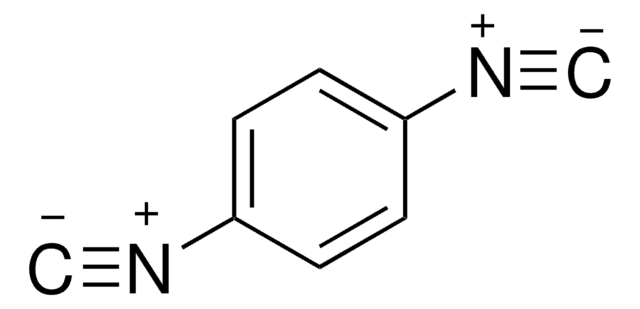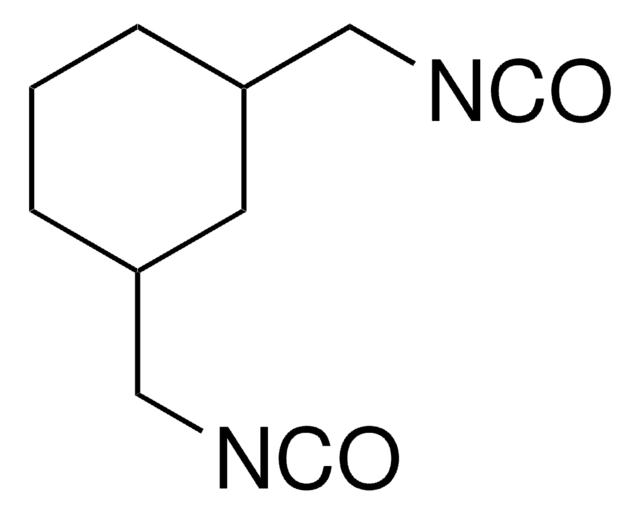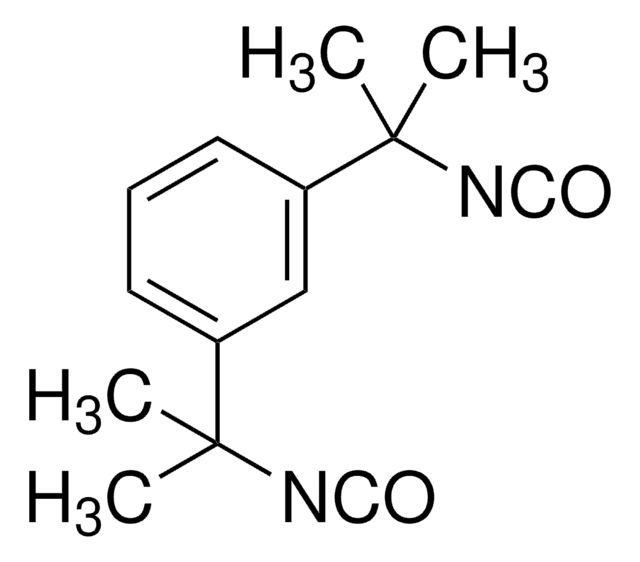262242
1,4-Phenylene diisocyanate
Sinónimos:
1,4-Diisocyanatobenzene, p-Phenylene diisocyanate
About This Item
Productos recomendados
vapor pressure
<0.01 mmHg ( 20 °C)
Quality Level
form
solid
bp
260 °C (lit.)
mp
96-99 °C (lit.)
solubility
THF: soluble
acetone: soluble
ethyl acetate: soluble
toluene: soluble
functional group
isocyanate
SMILES string
O=C=Nc1ccc(cc1)N=C=O
InChI
1S/C8H4N2O2/c11-5-9-7-1-2-8(4-3-7)10-6-12/h1-4H
InChI key
ALQLPWJFHRMHIU-UHFFFAOYSA-N
Categorías relacionadas
Application
- A reactant to synthesize high yield polymers via criss-cross addition polymerization reaction with alkyl aldazines in pyridine.
- An organic building block to prepare adamantyl-containing diurea and thiourea derivatives applicable as potent mammalian and human soluble epoxide hydrolase inhibitors.
- A coupling agent to synthesize polyethylene glycol (PEG)/silica composite material using dibutyltin dilaurate (DBTDL) as a catalyst.
It can also be used:
- As a cross-linking reagent to investigate the mechanism of enzyme immobilization on silanized surfaces.
- In the synthesis of the dipodal bis-urea receptor, a selective receptor for hydrogen sulfate.
- In the deposition of polyurea resists films via molecular layer deposition.
signalword
Danger
Hazard Classifications
Acute Tox. 2 Inhalation - Aquatic Chronic 2 - Eye Irrit. 2 - Resp. Sens. 1 - Skin Irrit. 2 - Skin Sens. 1
Storage Class
6.1A - Combustible acute toxic Cat. 1 and 2 / very toxic hazardous materials
wgk_germany
WGK 3
flash_point_f
>235.4 °F - closed cup
flash_point_c
> 113 °C - closed cup
ppe
dust mask type N95 (US), Eyeshields, Faceshields, Gloves
Elija entre una de las versiones más recientes:
¿Ya tiene este producto?
Encuentre la documentación para los productos que ha comprado recientemente en la Biblioteca de documentos.
Los clientes también vieron
Global Trade Item Number
| Número de referencia del producto (SKU) | GTIN |
|---|---|
| 262242-100G | 4061832106618 |
| 262242-25G | 4061826116210 |
Nuestro equipo de científicos tiene experiencia en todas las áreas de investigación: Ciencias de la vida, Ciencia de los materiales, Síntesis química, Cromatografía, Analítica y muchas otras.
Póngase en contacto con el Servicio técnico















